Activated charcoal soap is one of those beauty secrets that are not so secret anymore!
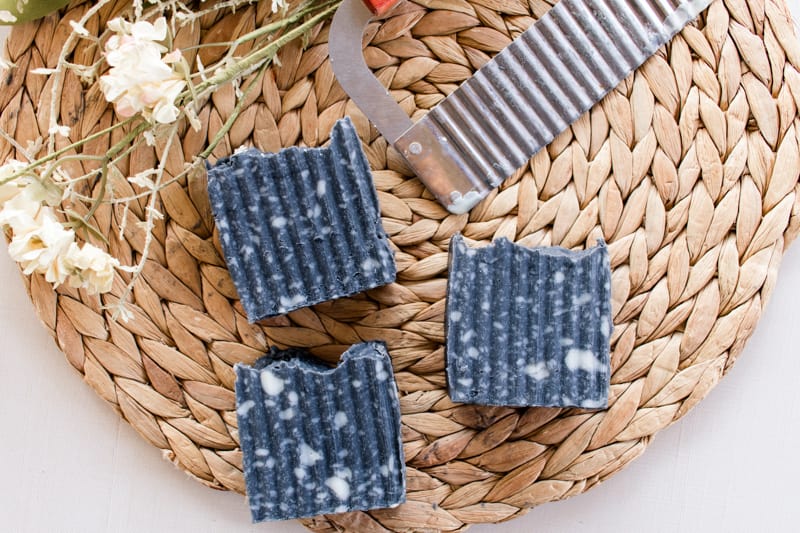
It sounds a bit strange, I know. But it’s becoming ever more popular to use it in facial soap due to its incredible benefits of drawing out impurities and dirt from the skin.
I’ll admit that I was skeptical of using activated charcoal soap on my face at first, thinking it might cause a breakout or aggravate my skin, but boy was I wrong.
I just needed to understand how it works and why it’s so good, and now I love it.
It’s a regular part of my skin cleansing routine. I use it as a deep pore cleanser to keep spots and blemishes at bay and give my skin a good cleaning once or twice a week.
In this post, I’ll share my favorite activated charcoal soap recipe, so you can try making it yourself.
Please carefully read the instructions in the recipe, as it is imperative to use the exact measurements and set aside the proper time it takes to make activated charcoal soap.
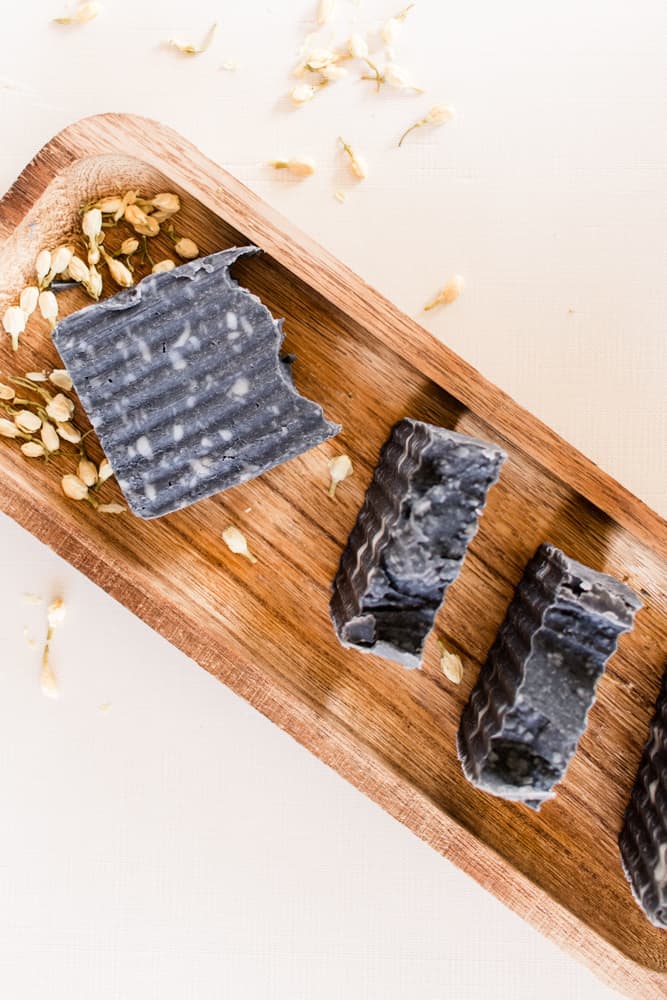
What is charcoal soap good for?
The exciting thing about charcoal is that it’s been used for centuries in beauty products without us realizing it – often as an addition to other cleansing products.
This pure black powder is powerful stuff. Even the Egyptians loved it for its detoxifying benefits, showing how long it’s been popular.
Activated charcoal soap benefits
But is charcoal good for the skin?
Yes! It’s excellent on oily skin and acne, being a great cleanser, helping draw out dirt and impurities and balance the skin’s sebum.
It’s also great to help tighten pores and improve the skin’s texture, smoothing out fine lines and wrinkles.
On normal skin, it’s lovely to use as a gentle cleanser, or perhaps twice a week, as it can also be exfoliating depending on the amounts and consistency used.
Activated charcoal helps remove unsightly blackheads, which contribute to spots, therefore helping purify and refresh the skin.
It’s fantastic for removing grime built up over the day and leaving skin refreshed and clean.
Activated charcoal can even be used in face masks and scrubs or as a paste blended with water to whiten teeth (not the soap version – just plain activated charcoal!)
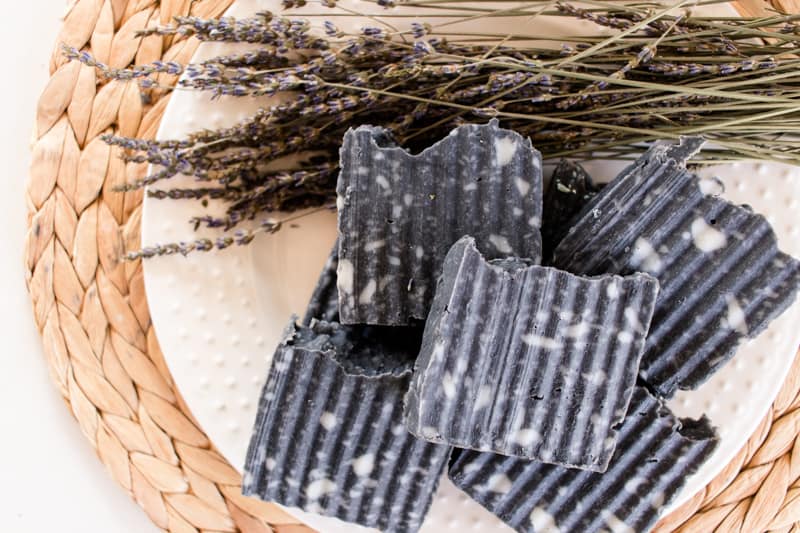
Does charcoal soap lighten skin
There have been rumors that charcoal is suitable as a skin lightener, but in fact, there’s little evidence of this being true.
Perhaps there’s confusion here, as charcoal tends to reveal the natural skin color from its cleansing abilities?
So perhaps this is where the claim comes from. Your skin will look clearer and brighter due to using charcoal in your skincare routine.
Where to find activated charcoal
Activated charcoal is not the same as the charcoal you buy for your bbq, don’t worry! Just in case you were wondering. It’s a reputable beauty product and safe to use.
Activated charcoal has been heated at a high temperature to ‘activate’ it, meaning it becomes more porous, so it collects more dust, toxins, and particles (aka impurities from your skin)
You can find activated charcoal in powder form in pharmacies and some grocery stores and online.
How to make charcoal soap?
As with all of my recipes, we’re using only natural ingredients in the homemade charcoal soap.
You’ll need a heat-proof jar and large bowl to mix the lye and liquid in, plus a scale to weigh the ingredients.
And you’ll need soap molds. I recommend using these ones as the soap turns out really well-formed from them and they do not stick.
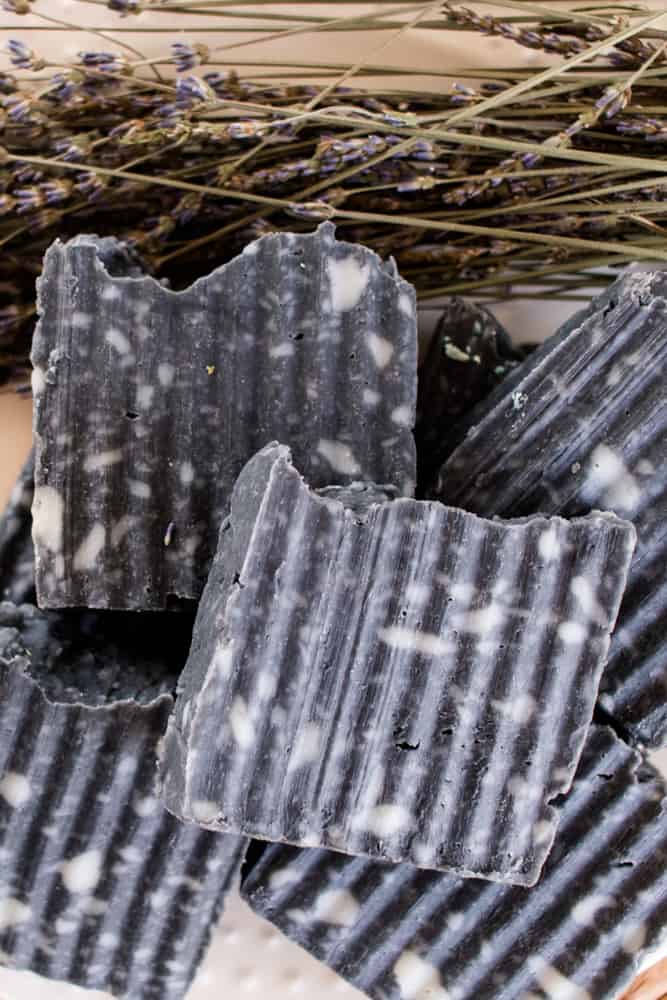
This post contains affiliate links, which means I make a small commission at no extra cost to you. Get my full disclosure HERE.
Always take proper precautions when working with lye. Lye Is necessary to make soap, but in its natural form, it can damage the skin, cause burns, and even blindness.
Work in a well-ventilated area, or outside if possible, and always wear goggles, long sleeves, and gloves.
Here are the charcoal soap ingredients you’ll need:
- Avocado Oil 6 oz
- Palm Oil 4 oz
- Castor Oil 8 oz
- Coconut Oil 14 oz
- Oil & Fats Total: 32.00 oz
- Lye (Sodium Hydroxide) 4.70 oz
- Liquid 10.51 oz
- Lye & Liquid Total: 15.21 oz
- Charcoal 1 tbsp
Total Batch Yield: 47.21 oz
And here are the instructions:
- Use a digital scale to measure out the water. Then, add it to the heat-resistant container.
- Slowly add the lye to the water. Stir the lye into the water until dissolved. Note that the chemical reaction will cause it to heat up quickly. Set aside to cool to about 120-130°F
- Melt the coconut and palm oil in a small saucepan on the stove over medium heat.
- Once melted, set aside to cool slightly.
- Add all the oils to a metal mixing bowl.
- Pour the lye water in with the melted fat and oil a little at a time and mix with an immersion blender.
- Continue adding the lye water and mixing between each round until the soap comes to trace
- To check the “trace,” hold the immersion blender over the bowl; if the soap drips and pools up on the top, it’s come to the correct trace.
- Whisk in activated charcoal
- Pour the soap into the mold and let dry for 24 hours up to 3 days.
- Cut into bars and allow them to cure for 5-6 weeks before enjoying.
The trick when making activated charcoal soap is the waiting time. You must be patient with it and leave it for the number of weeks stated before using it.
It’s hard, I know, but so worth it!
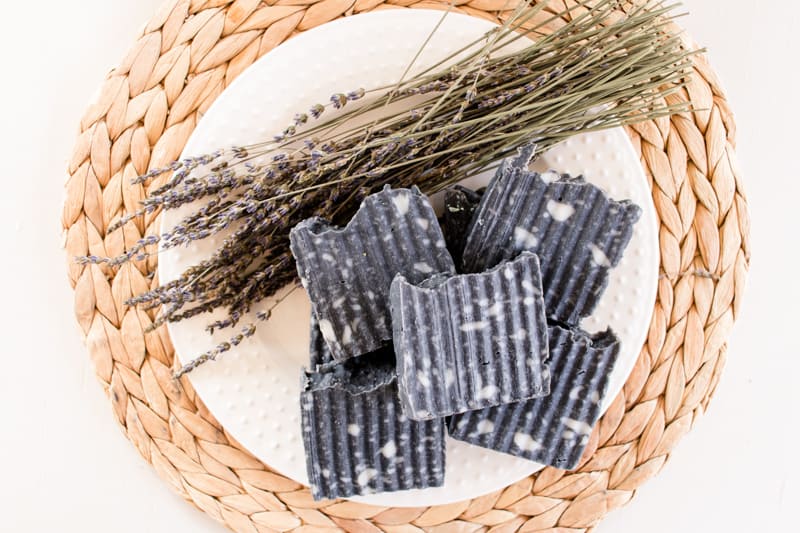
How to use charcoal soap
The answer to this question depends on the type of skin you have.
If you have oily skin, you could use a charcoal soap as a daily cleanser.
With normal skin, perhaps two to three times a week is enough.
This recipe is very gentle and kind to the face, as it contains coconut and avocado oil which complement the cleansing abilities of the charcoal.
My only concern would be if your skin is dehydrated. Charcoal soap may dry the skin further in some instances.
It draws out excess oil and impurities, so if your skin is naturally dry, I would use this soap once a week and use a moisturizing soap bar the rest of the time.
My advice with every product is to try it on a small area first and see if it’s suitable for your skin type.
I hope you love making this recipe! Please drop a comment below if you do make it and let me know what you think. And if you are looking for more great soap bar recipes, be sure to try some of these other favorites below.
- Lard soap
- Olive oil swirl soap bars
- Clear glycerin soap bars
- Goat milk soap (melt and pour)
- Chamomile soap
- Hot process aloe soap
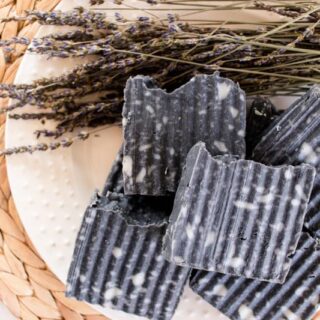
Activated Charcoal Soap Recipe
Equipment
- Safety goggles
- Gloves
- Soap mold
Ingredients
- 6 oz Avocado oil
- 4 oz Palm oil
- 8 oz Castor oil
- 14 oz Coconut oil
- 1 tbsp Activated charcoal
Lye & Liquid
- 4.70 oz Lye
- 10.51 oz Liquid
Instructions
- Cover any exposed skin, wearing gloves, eye protection, and work in a well ventilated area.
- Use a digital scale to measure out the water. Then, add it to the heat-resistant container.
- Slowly add the lye to the water. Stir the lye into the water until dissolved. Note that the chemical reaction will cause it to heat up quickly. Set aside to cool to about 120-130°F
- Melt the coconut and palm oil in a small saucepan on the stove over medium heat.
- Once melted, set aside to cool slightly.
- Add all the oils to a metal mixing bowl.
- Pour the lye water in with the melted fat and oil a little at a time and mix with an immersion blender.
- Continue adding the lye water and mixing between each round until the soap comes to trace.
- To check the “trace,” hold the immersion blender over the bowl; if the soap drips and pools up on the top, it's come to the correct trace.
- Whisk in activated charcoal
- Pour the soap into the mold and let dry for 24 hours up to 3 days.
- Cut the soap into bars, and space out on a drying rack for 5-6 weeks to fully cure.
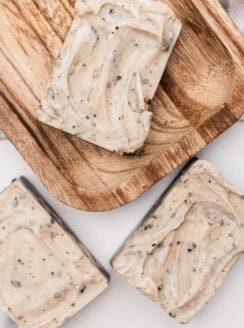
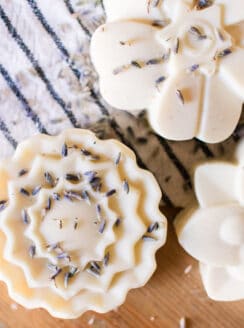
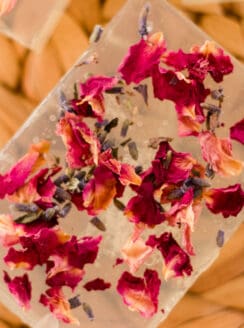
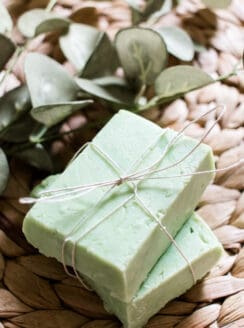
Jodelle says
Can I use this recipe for hot process soap?
Elaina says
Hello!!! Thank you sooo much for all your information and posts!!!
My question is “ can I substitute the palm oil “ for another carrier oil? I’m excited to try the charcoal soap 🧼
Laura says
Yes, you can! You will need to recalculate the measurements with a soap calculator though!
Mariah collins says
Hi there! Does this soap turn the skin black while being used? Is it something that will leave black in the tub? Thank you!
Laura says
I have not had any issues with this soap leaving any residue or color in the tub!
Rhema says
Hi, please in my area our coconut oil is already in it’s liquid state…..
Do I still use 14 oz as stated for the unliquid coconut?
Thanks please
Laura says
Regular and fractionated coconut oil will result in a very different consistency.
Brittney says
Can we put the same amount of activated charcoal in the melt and pour base if we aren’t using lye?
Laura says
Yes
Jodelle says
What oil can I use if I don’t have palm oil?
I have all the other oils you listed except for palm. I have Grape seed and sweet almond. Would one of those work. Sorry I’m new to soap making !
Laura says
You can use a different oil, but be sure to adjust the measurements using the soap calculator.
Sandra says
Can Lard be used for some of the oils/fats? I’d rather add in charcoal to a simple lard&lye recipe but I’m not finding one.
Thanks!
Laura says
Yes, you can sub any of the oils & fats. However, you will need to recalculate the measurements using a cold-process soap calculator. I use the brambleberry calculator.
Kim says
Can you make this with a pour and melt soap base?
Laura says
Yes, absolutely. I have a melt and pour charcoal soap recipe on the site. Just search for charcoal soap.
Kelly says
Hi,
Hope you are well?
I’m new to this,
And I just want to confirm,
I’d like to add a fragrance oil to the batch, how much would be a good amount?
I’d also just like to find out, you say 10.51oz of liquid, does this only refer to water? Or would the fragrance be included in this?
Thank you for the recipe.
Laura says
It really depends on the fragrance.
If you are using essential oils, around 20 drops would be enough.
The liquid refers just to the water.
Jodi says
Would this turn out if I swapped the castor and palm oil for olive oil?
Laura says
You will need to use the soap calculator linked in the post to figure out the new measurements.